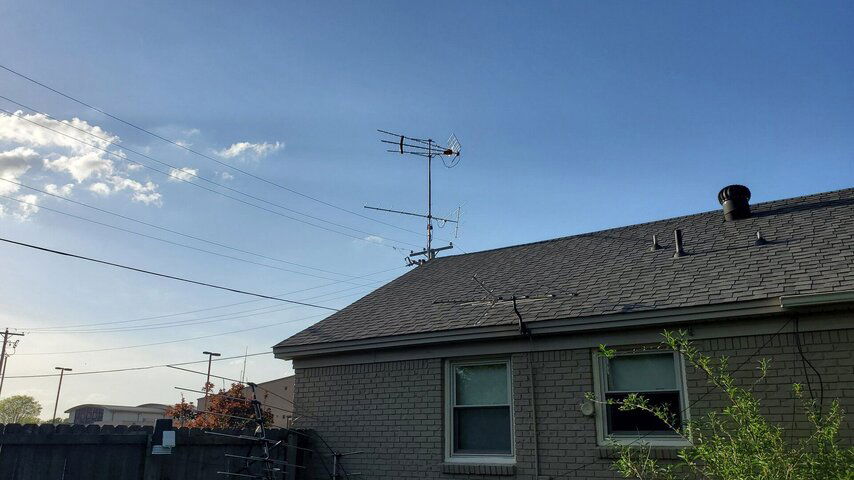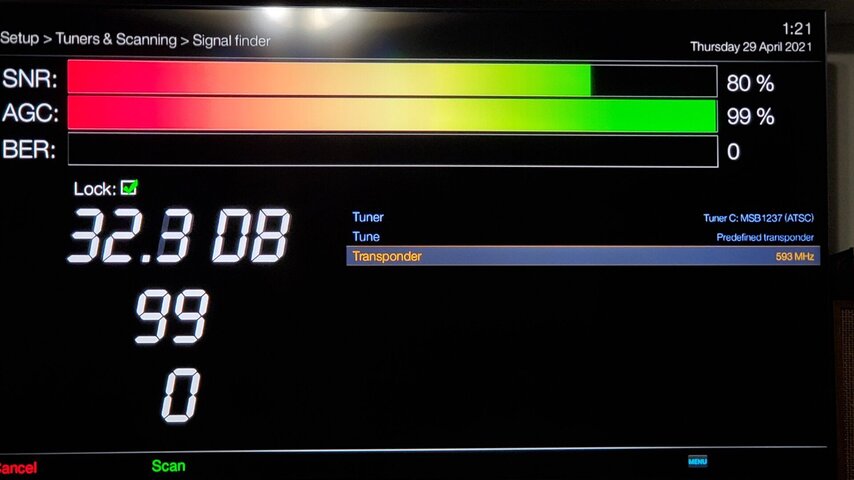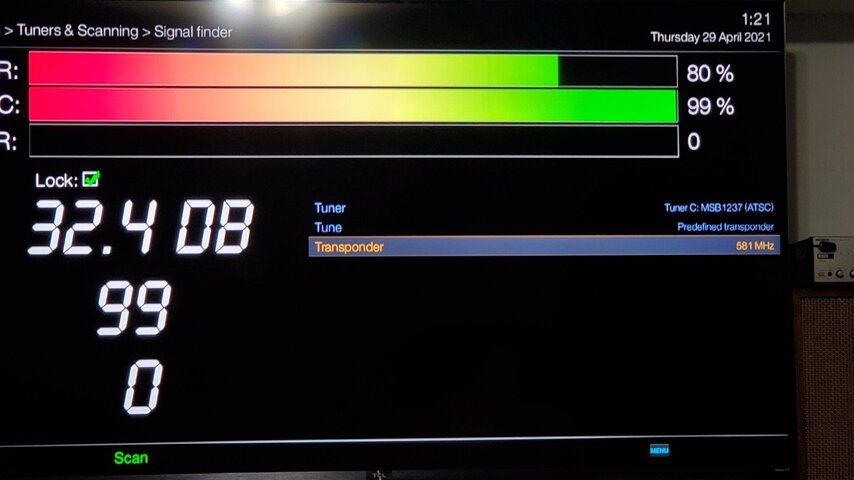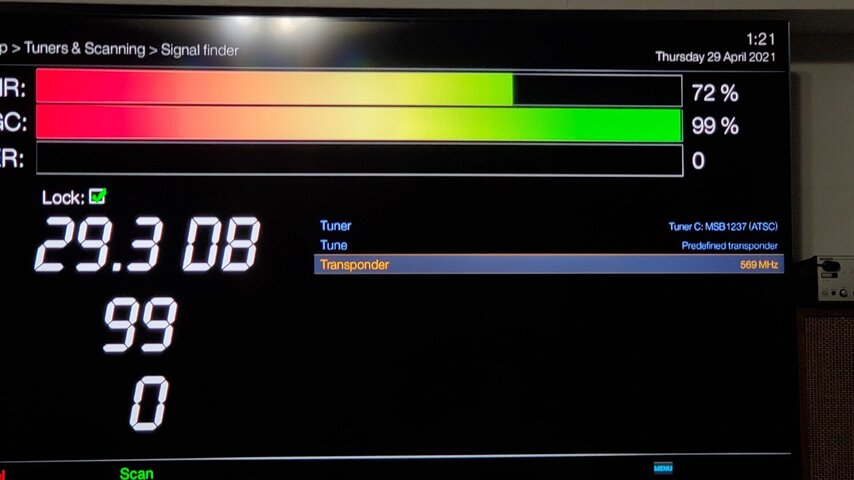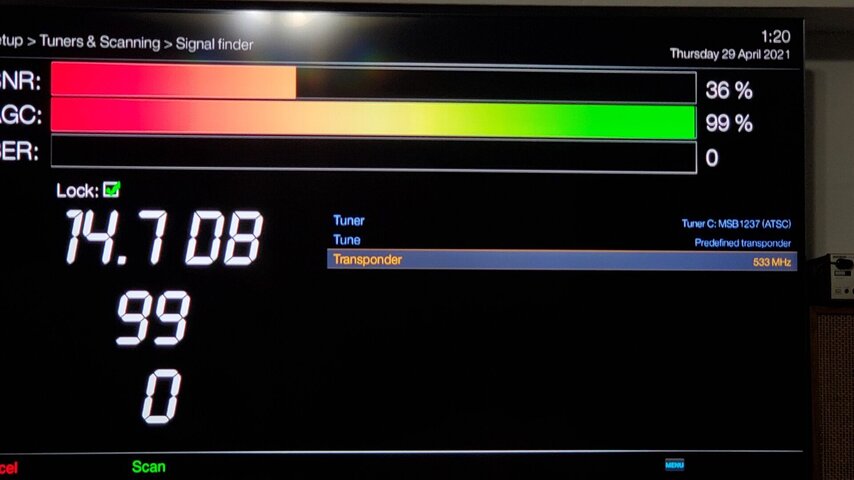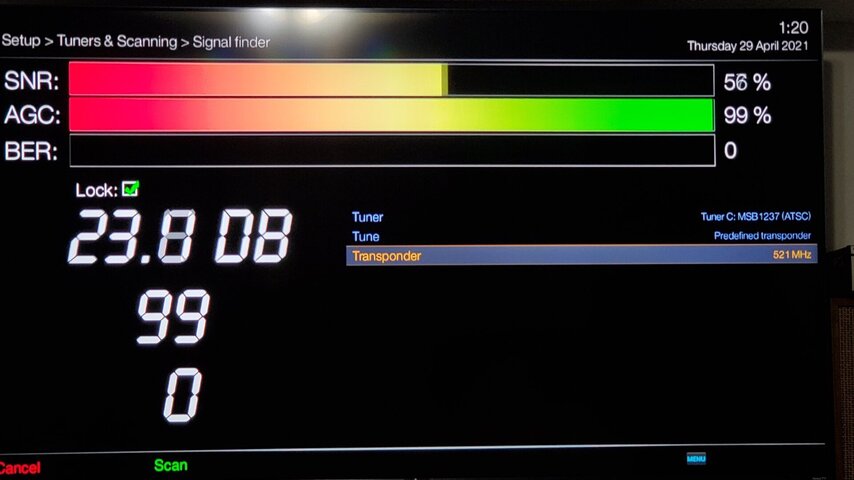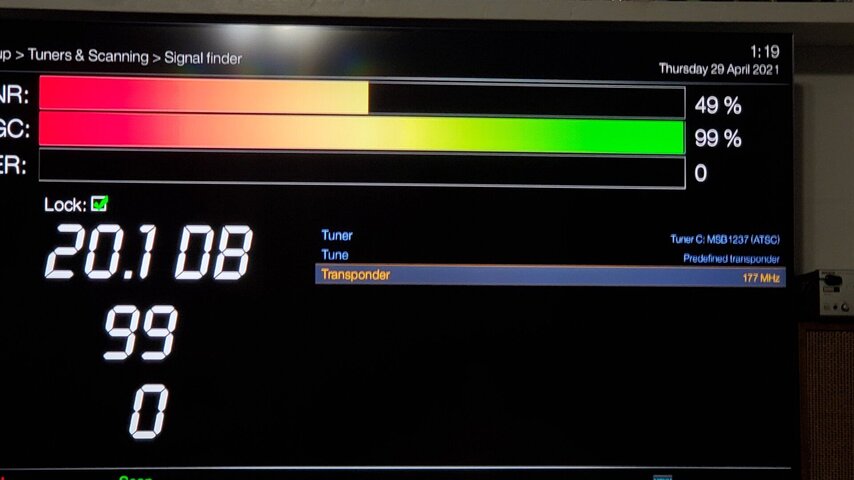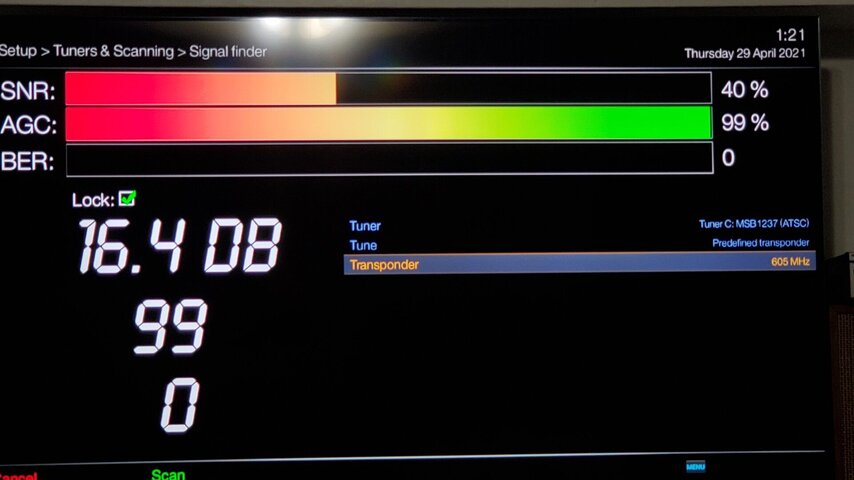Has anyone here noticed interference from nearby powerlines? I had my antenna up around 32ft and my local NBC on RF32 barely locks with around 16dB C/N. My CBS on RF12 is stable at around 25dB. My ABC on RF22 runs around 27-28dB at ~32ft. Antenna looks thru the powerlines around 45ft away.
When I lowered the antenna to check my connections, the signal on RF32 went up to 28dB, but RF22 dropped to 21dB and RF 12 dropped to 18dB...
I will attach my RabbitEars Report, but anyone here dealt with a similar issue? I guess I may need to just find the sweet spot for everything?
 rabbitears.info
rabbitears.info
When I lowered the antenna to check my connections, the signal on RF32 went up to 28dB, but RF22 dropped to 21dB and RF 12 dropped to 18dB...
I will attach my RabbitEars Report, but anyone here dealt with a similar issue? I guess I may need to just find the sweet spot for everything?
RabbitEars.Info
RabbitEars, where you can learn all about local, over-the-air TV channels.




